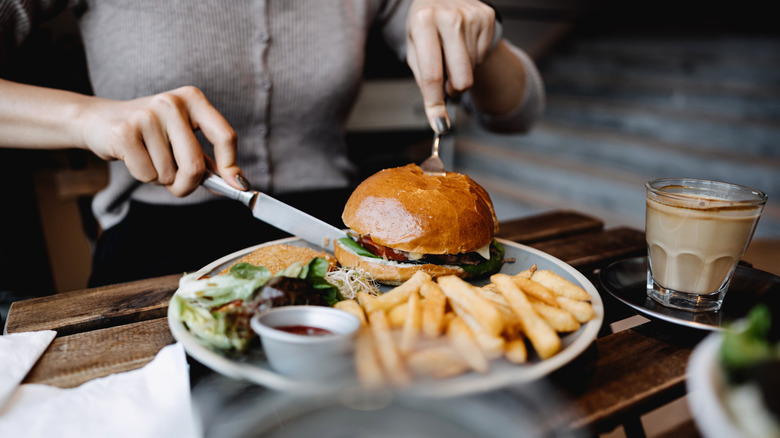The art of cutting etiquette for banquets is a crucial skill that every kitchen professional must master. Banquets are events where presentation and precision are paramount, and the way food is cut and presented can make or break the dining experience. In this article, we will explore the nuances of cutting etiquette, providing kitchen professionals with comprehensive insights to enhance their skills.
In the world of banquets, where first impressions are lasting, the precision of your knife work can set the tone for the entire meal. Whether you are preparing intricate hors d'oeuvres or carving a roast, understanding the subtleties of cutting etiquette is essential. This guide will delve into techniques and tips that ensure every slice is perfect, showcasing your culinary prowess.

The Importance of Precision in Banquet Settings
Precision is not just a culinary skill; it is a form of art that reflects the chefs expertise and the kitchen's professionalism. At banquets, where dishes are often served in large quantities, maintaining uniformity in each piece is critical. This not only enhances the visual appeal but also ensures that each guest receives a consistent dining experience. Read more about dining etiquette.
Moreover, precise cutting can influence the flavor and texture of the dish. For instance, the way vegetables are cut can affect their cooking time and flavor absorption, while the thickness of meat slices can impact tenderness. Thus, mastering cutting techniques is vital for any kitchen professional aiming to excel in banquet settings.
Essential Cutting Techniques for Banquets
1. The Art of Uniformity
Uniformity in cutting is crucial for banquet presentations. When each piece looks identical, it creates a sense of harmony and professionalism. Techniques such as julienne, brunoise, and chiffonade are fundamental skills that every chef should master. These techniques ensure that vegetables and herbs are not only cut consistently but also enhance the dishs aesthetic appeal. For more on knife handling, explore knife handling mistakes.
2. Mastering the Carving Knife
Carving meats at banquets requires skill and finesse. The carving knife should glide through the meat with ease, creating smooth, even slices. This not only enhances the presentation but also ensures that each guest enjoys a perfectly cooked piece. Familiarity with the anatomy of the meat and the ability to identify the grain is essential for achieving the best results.
3. Appropriate Knife Selection
The choice of knife can significantly impact the quality of your cuts. Each knife serves a specific purpose, and using the appropriate knife for each task is a hallmark of professional kitchen etiquette. For example, a chefs knife is versatile and suitable for various tasks, while a paring knife is ideal for more intricate work. Learn more about formal dinner knife rules.
Maintaining Etiquette in Banquet Settings
In addition to cutting techniques, maintaining etiquette in banquet settings is vital. This includes understanding the cultural nuances of different cuisines and adhering to traditional practices. For example, in some cultures, it is customary to slice bread rather than tear it, while others may have specific rituals for carving meats. Understanding these customs is crucial for delivering a memorable dining experience.
Moreover, maintaining a clean and organized workstation is a reflection of professionalism. Ensuring that your cutting area is neat and free from clutter not only enhances efficiency but also upholds the standards of hygiene and safety in the kitchen. For tips on maintaining your knives, check out cleaning German knives.

FAQs About Cutting Etiquette for Banquets
What is the significance of uniform cuts in banquets?
Uniform cuts ensure consistency in cooking and presentation, enhancing the overall dining experience.
How can I improve my carving skills?
Practicing with different meats and understanding their anatomy can significantly improve your carving skills.
Why is knife selection important?
Using the right knife for each task ensures precision and efficiency, which are crucial in professional settings.
In conclusion, mastering cutting etiquette for banquets is an indispensable skill for kitchen professionals. By focusing on precision, appropriate techniques, and maintaining professional etiquette, chefs can elevate the dining experience and impress guests with their culinary expertise. For a deeper dive into formal dining practices, explore continental dining etiquette.
This article contains affiliate links. We may earn a commission at no extra cost to you.


























